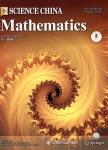Structure and magnetic properties of nanocrystalline ferromagnets (Ⅱ)——Magnetoelastic coupling effects
Structure and magnetic properties of nanocrystalline ferromagnets (Ⅱ)——Magnetoelastic coupling effects作者机构:Department of Materials Physics University of Science and Technology Beijing Beijing 100083 China Synchrotron Radiation Laboratory Institute of High Energy Physics Chinese Academy of Sciences Beijing 100039 China Institute of High Energy Physics Chinese Academy of Sciences Beijing 100080 China
出 版 物:《Science China Mathematics》 (中国科学:数学(英文版))
年 卷 期:1997年第40卷第4期
页 面:395-399页
学科分类:0809[工学-电子科学与技术(可授工学、理学学位)] 07[理学] 070205[理学-凝聚态物理] 08[工学] 0805[工学-材料科学与工程(可授工学、理学学位)] 080502[工学-材料学] 0702[理学-物理学]
基 金:Project supported by the Special Item Foundation for Doctor of Advanced College Laboratory of Nuclear Analysis Technique Chinese Academy of Sciences and Beijing Synchrotron Radiation Facility National Laboratory
主 题:nanocrystalline ferromagnets magnetoelastic coupling effect soft magnetic properties.
摘 要:The role of magnetoelastic coupling effects in nanocrystalline ferromagnets is investigated by means of high-field magnetization and Doppler-broadening spectrum measurements. For the nanocrystalline Fe73.5 Cu1Nb3-Si13 5B9 alloy, the results show that the pinning effects resulting from the quasidislocation dipole intensely influence the movement of domain wall; by coupling with the magnetostriction the defects-induced stress fields determine the magnetic properties at the early stage of crystallization. In view of the effective anisotropy and magnetoelastic coupling energy the optimal annealing conditions of alloys are discussed.



